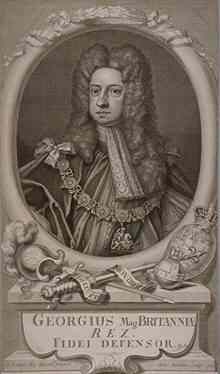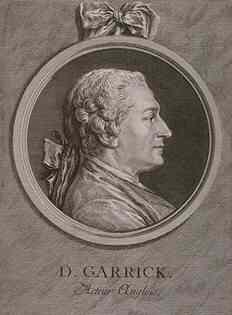Back
to Dress
Tips
for the Gentlemen
early
1700's - mid 1700's - late 1700's
picture
gallery
Early 1700's-
My dear gentlemen, formalism is beginning to triumph over nature and it is time
to trade in those loose, flowing coats for fully pressed seams and stiffly arranged
folds. Do visit the tailor instead of the seamstress and see what he can do
for you.
|
If you're
a man of the gentry ask for wide sleeves, a knee length coat, and a cocked
hat to set you apart from those commoners with closer sleeves, below the
knee coats, and their plain,
un-cocked hats. But I do believe I am getting ahead of myself! Let's
begin at the logical place, or possibly not so logical, but nevertheless
a good starting point when one is dealing with matters of fashion- the
bottom.
Your
shoes should be adorned with
buckles, not bows or rosettes. Breeches should be tight and be sure not
to leave your knees uncovered. Both your coat and your waistcoat should
be richly embroidered and your buttonholes should be frogged. Tending
to matters of waistcoats, my most highly recommended material is Calimanco,
a material of wool or linen weave, faced on one side with satin, on which
a rich design may be worked. Skirts should be wide (mayhap even wired)
and sleeve cuffs broad. Be sure your tunic is open to show your
waistcoat and a bit of lace ruffling on the sleeves wouldn't be ill-advised.
|

You can never go
wrong when mimicking the styles of King George and adapting them to your
own station. Copyright Corporation of London.
|
Now a quick
digression into accessories: if you want to be seen as "ahead of your time"
or "on the cutting edge of fashion," I advise you to pick up a snuffbox.
These will not truly reach their height for several years, but back to advice
for your dress...
As our journey
culminates upward toward the head, don't let your neck be caught without a neck-cloth
or cravat. I suggest Brussels lace, with the ends passed through the waistcoat
buttonholes. As for hair, wigs are getting always larger, higher, and fuller
(not to mention costlier!). It is proper to wear a Ramillies
wig, which is a powdered, brushed-back peruke,
with the hair puffed out at the sides, and at the back a long tail, fastened
with black bows at top and bottom. Topping it off, turn up the edges of your
"boater" hat to give it a slightly cocked appearance. Hmmmm, I do
believe you're ready to walk the streets in style- not forgetting your
muff in the winter months of course! (Return to top)
|

Playwright,
David Garrick wears a fashionable Ramillies wig. Copyright
Corporation of London.
|
Mid 1700's- What a prettily dressed period to live in my lucky friends!
This time of empiricism is a time for personality, and what better way
to show individuality than through the beautiful embroidery and delightful
silks of our waistcoats! It
is best to garnish these waistcoats with gold and silver threads and sequins.
They are also getting longer and beginning to include large flap pockets.
If you have the means, trim the edges richly with natural flower and leaf
designs to reflect the modern rage for the pastoral.
Try
to acquire a largely flared, wired, skirted coat, with a large row of
buttons down one edge. But take care after about 1750 or so to shrink
this coat and shorten the waistcoat.
|
Your dear
knees will finally get to breathe fresh air as shorter breeches gathered above
the knee come into style. Use a plain band with a button or buckle. These should
be set off beautifully by white stockings tapering down to square-toed
shoes with matching square buckles of silver.
Periwigs
are disappearing in favor of the bag-wig, a white-powdered wig, with its sidepieces
brought round in front and tied with bows of ribbon. Around 1750 these front-pieces
are becoming side curls in horizontal rows. If you think that hairstyles are
becoming elaborate, do wait until we have delved into the intricacies of the
proper hat! The Chapeau Bras
was a tri-cornered felt hat that was carried underneath the arm as often as
worn on the head. Sometimes these hats can be adorned with ostrich feather trimming.
Equally fashionable is the Kevenhuller,
a three-cornered hat that has high turn-up brims with a peak coming in front
that is always banded with gold braid or other material (personally, I find
these extremely garish, but, alas, it is only my duty to keep you abreast
of current modes, not comment upon them). When you are not wearing a wig, it
is acceptable to wear a sort of turban, but only indoors, and I don't suggest
the practice in front of strangers and superiors!
Take advantage,
gentlemen, for this is the last time you will be able to wear truly "beautiful"
clothing, as modern styles have sunken to the drab and uniform- so indulge,
in your silks, satins, velvets, and brocades! (Return to top)
Late 1700's-
This age of solid prosperity is reflected in the heavy, massive cuts of
our clothing, as well as in the rich, thick, heavily embroidered materials of
which they are made. Although cuts are becoming more modest, rich materials
such as velvet and satin with embroidery and lace are not yet gone. The phenomenon
of a fashionable young man called a Macaroni is coming to pass putting
exaggeration center-stage. He wears a
wig that towers miles above him and perches a small, ridiculously foppish
hat on the top of the peak (I fear here that I am again interjecting my personal
values on this style of dress, but what can be seriously said about a
hat that needs to be raised with a sword or a cane to its appropriate position?).
He also wears two fobs to his waistcoat, carries a jeweled snuffbox,
a gold-knobbed amber cane with a tassel, and a diamond-hilted sword.
|
But
for the common man, coats are becoming more cut away and collars are becoming
higher and higher. The stiffened flares of coat and vest are disappearing
and the vest loses its long skirt in 1780. Overcoats with first flat,
wide collars, sometimes double, and then treble collared capes are becoming
stylish. The shirt with a double line of fringe should peek out from under
the coat.
As sword
carrying is becoming more and more discouraged at this time, I encourage
you to hang it on your wall and trade it in for a nice pair of Top Boots,
used for riding, or perhaps, after 1790 the
Hessian Boot, which is short, and close-fitting, which comes to the
knee and is finished with a tassel in the front. Of course,
pumps are the only fitting ballroom
attire.
Hats
will be generally the same as earlier days except for the introduction
of the Bicorne,
which has only two corners. It can be worn either longways or shortways.
The wide Quaker hat and the tall
Beaver hat appears in 1780, carrying further the British tradition
of ridiculous headwear.
|

The
Macaroni was an 18th Century British Dandy. Copyright Corporation of London.
|
What is most
important to remember my dear advice-seeking friends is that no matter what
time period you are dressing in this extravagant century it is important to
express individuality. Formalism and empiricism are the main forces involved
in dress becoming a reflection of the economic and social status of England
at the time. Remember that your dress is more than simply a way to protect yourself
from the elements, but a way to express your social position, attitudes, and
class. I am filled with confidence that if you look about you, study the dress
of the Kings, and adapt it to your own station, you will be perfectly successful
in your quest for the perfect ensemble. (Return to top)
Study up on
advice for the ladies , visit the picture
gallery or return to dress.


